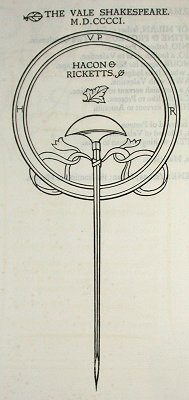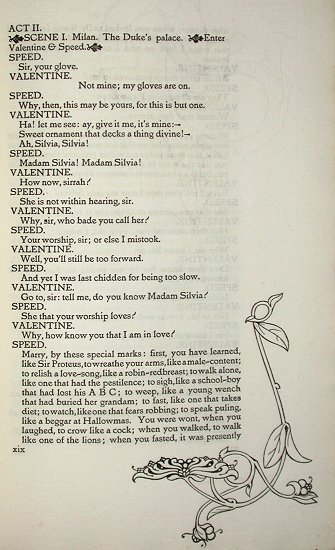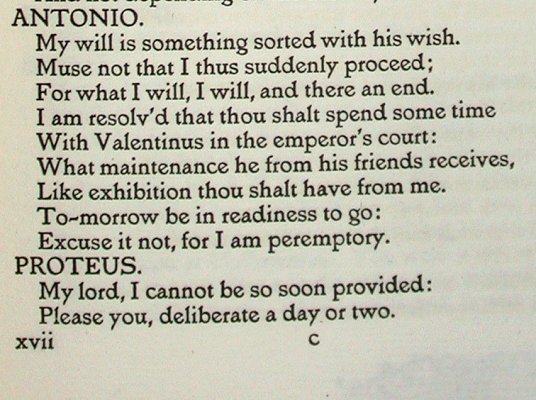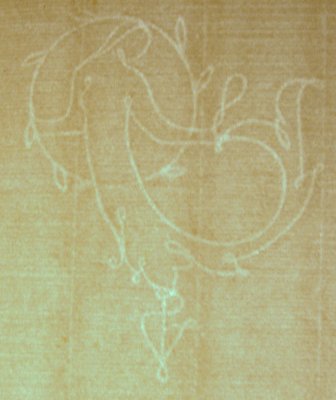Margherita Palumbo and Julia Stimac, “The cover of our Italian Books catalogue series: A masterpiece of early Venetian woodcut borders revisited,” 3 November 2021, www.prphbooks.com/blog/bordone-revisted. Accessed [date].
Author: Dan Williford
-

Hieronymus, 1498
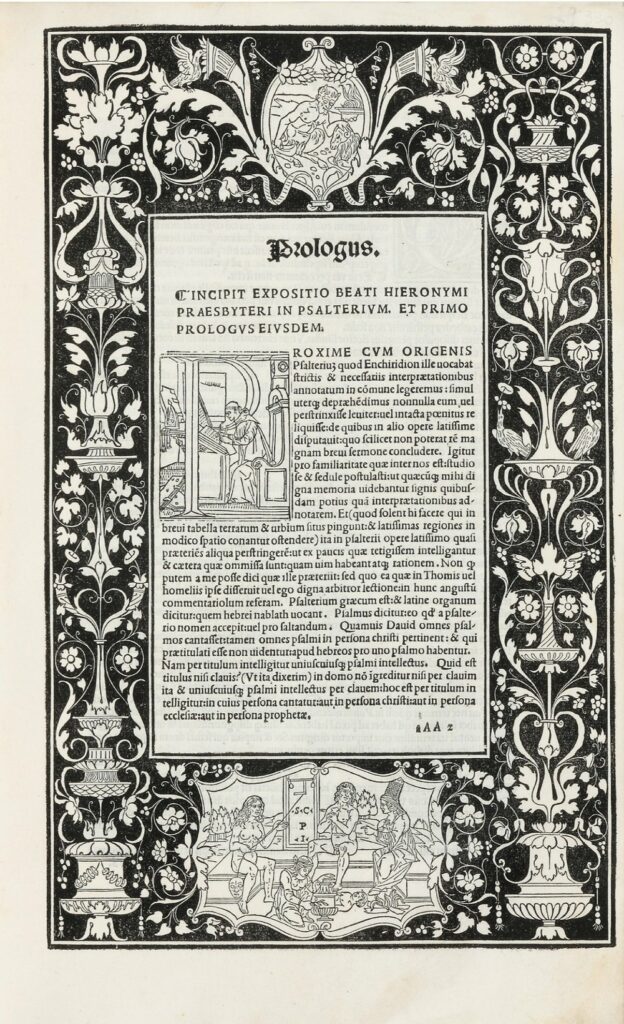
Hieronymus, Sophronius Eusebius (347-420). Commentaria in Bibliam. Ed: Bernardinus Gadolus. Venice, Johannes and Gregorius de Gregoriis, de Forlivio, 1497 – 25 August 1498.
This border is more elaborate than that included in the Lucian, with two additional white-ground vignettes: the upper vignette shows a satyr preparing a sacrifice, while the lower one presents Hercules at the parting of the ways. Single elements of Bordone’s decorative vocabulary also find close parallel in ornamental headpieces and initials used by Aldus in the years 1495-1499, and several scholars share the opinion that Bordone was the principal designer of the 172 woodcuts illustrating the Hypnerotomachia Poliphili, the pinnacle of Aldus’ printing career.
-
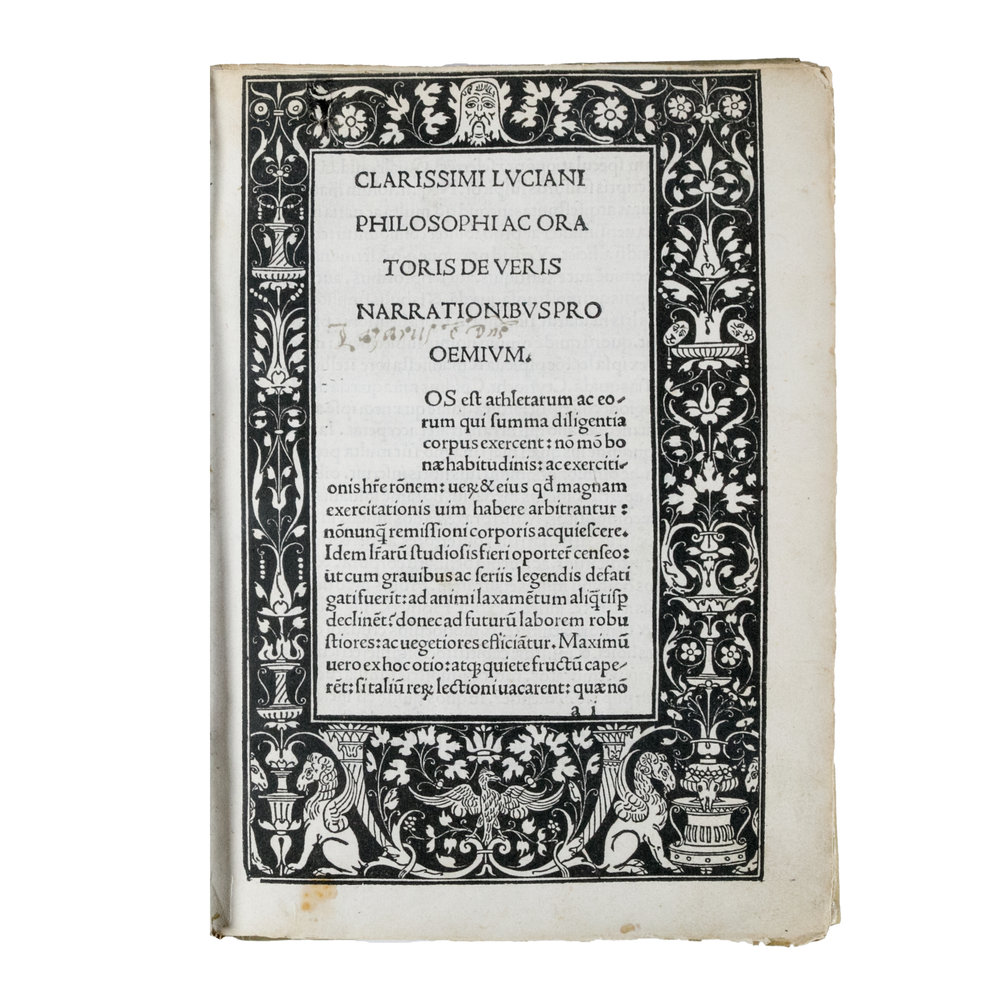
Vera Historia, 1494
(Benedetto Bordone). Lucianus Samosatensis (125–after 180 BC).
Vera historia. Tr: Lilius (Tifernas) Castellanus. Add: De asino aureo; Philosophorum vitae; Scipio; Tyrannus; Scaphidium (Dialogus de funerali pompa); Palinurus; Charon; Diogenes; Terpsion; Hercules; Virtus dea; In amorem; Timon; Sermo de calumnia; Laus muscae. Ed: Benedictus Bordonus; Maephus Vegius: De Felicitate et miseria.
Venice, Simon Bevilaqua, for Benedetto Bordone, 25 August 1494.
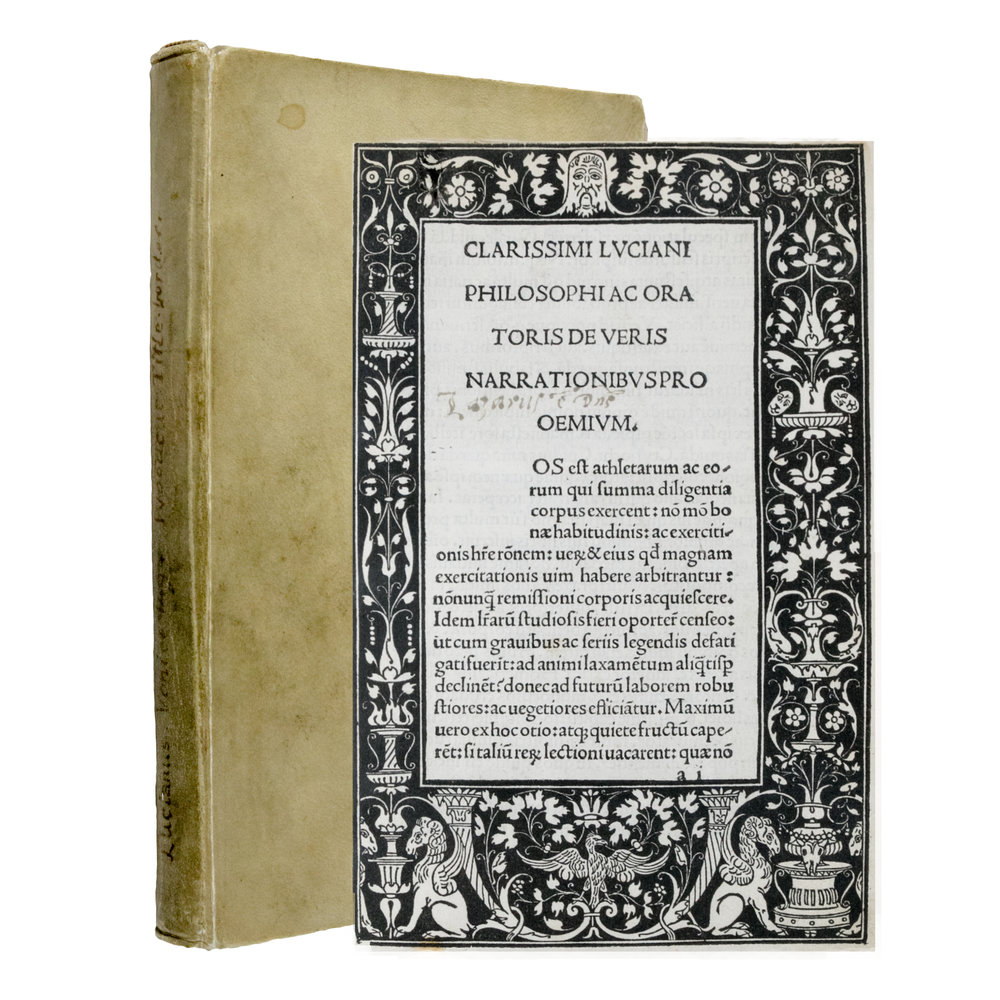

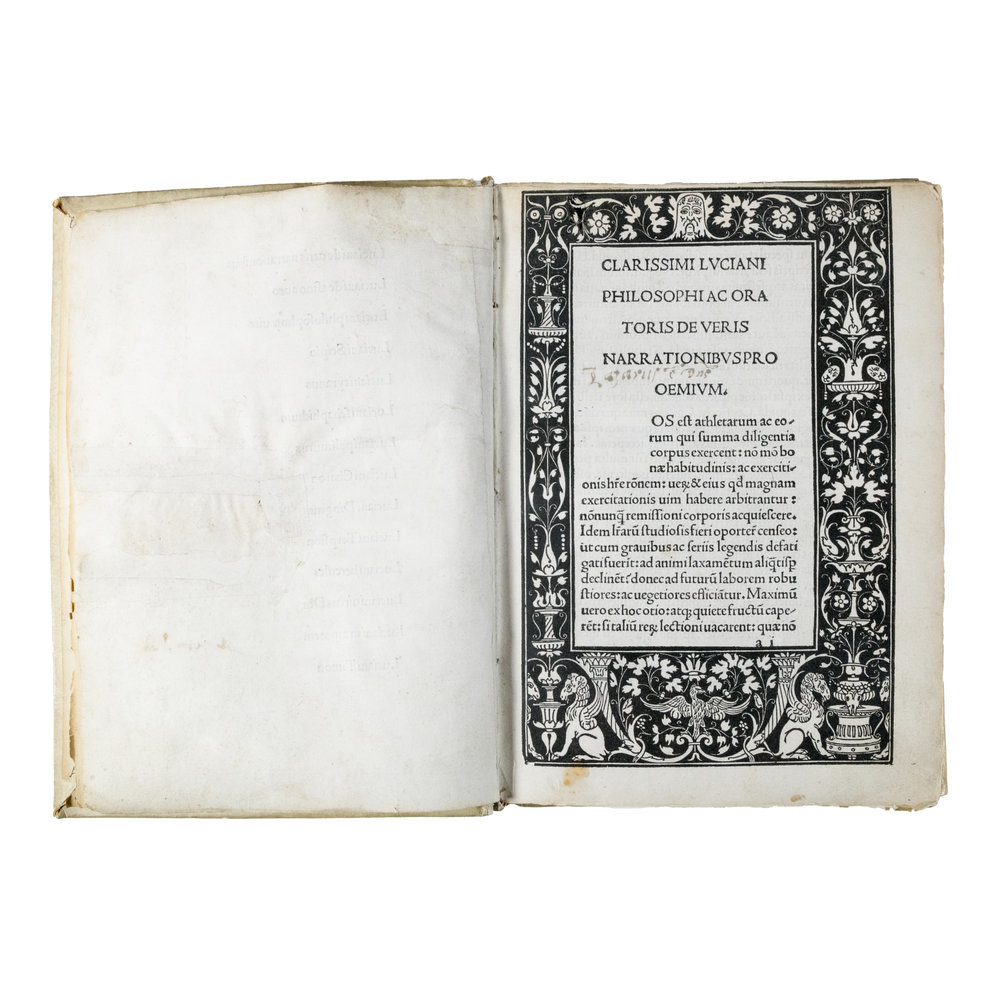
Lucianus Samosatensis (125–after 180 BC). Vera historia. Tr: Lilius (Tifernas) Castellanus. Add: De asino aureo; Philosophorum vitae; Scipio; Tyrannus; Scaphidium (Dialogus de funerali pompa); Palinurus; Charon; Diogenes; Terpsion; Hercules; Virtus dea; In amorem; Timon; Sermo de calumnia; Laus muscae. Ed: Benedictus Bordonus; Maephus Vegius: De Felicitate et miseria. Venice, Simon Bevilaqua, for Benedetto Bordone, 25 August 1494.
-

Apuleius’ Metamorphoses, 1519
Title: Apulegio volgare, diuiso in undeci libri, novamente stampato & in molti lochi aggiontoui che nella prima impressione gli manchaua, & de molte più figure adornato
Author: Lucius Madaurensis Apuleius (M’Daourouch, Algeria ca. 124–after 170)
Designer: Design of illustrations attributed to Benedetto Bordone (Italian, Padua ca. 1455/60–1530 Padua, active mainly Venice from 1488)
Translator: Matteo Maria Boiardo (Italian, 1434–1494)
Publisher: Nicolo daristotele da Ferrara
Publisher: Vincenzo de Polo da Venetia (Italian, 16th century)
Published in: Venice
Date: September 3, 1519
Medium: Printed book with woodcut illustrations
Dimensions: 5 7/8 x 3 15/16 x 13/16 in. (15 x 10 x 2 cm)
Classification: Books
Credit Line: The Elisha Whittelsey Collection, The Elisha Whittelsey Fund, 1956
Accession Number: 56.608.1
Boiardo’s popular translation of Apuleius’ Metamorphoses (also known as ‘The Golden Ass’), which originated in the Ferrarese court in the 1470s at the request of Ercole I d’Este, was only supplanted in 1549, when a new translation by Agnolo Firenzuola appeared.
The late classical work of Apuleius tells of the misadventures of a young man who, attempting to use magic in order to fly, is accidentally transformed into an ass. In this illustration, poor Lucius is punished for having escaped from the robbers who stole him. The narrator (Lucius) tells us that he would have been beaten to death if not for the malodorous aftermath—suggested in cartoon fashion in this illustration—of the vegetable feast he had enjoyed during his brief period of freedom.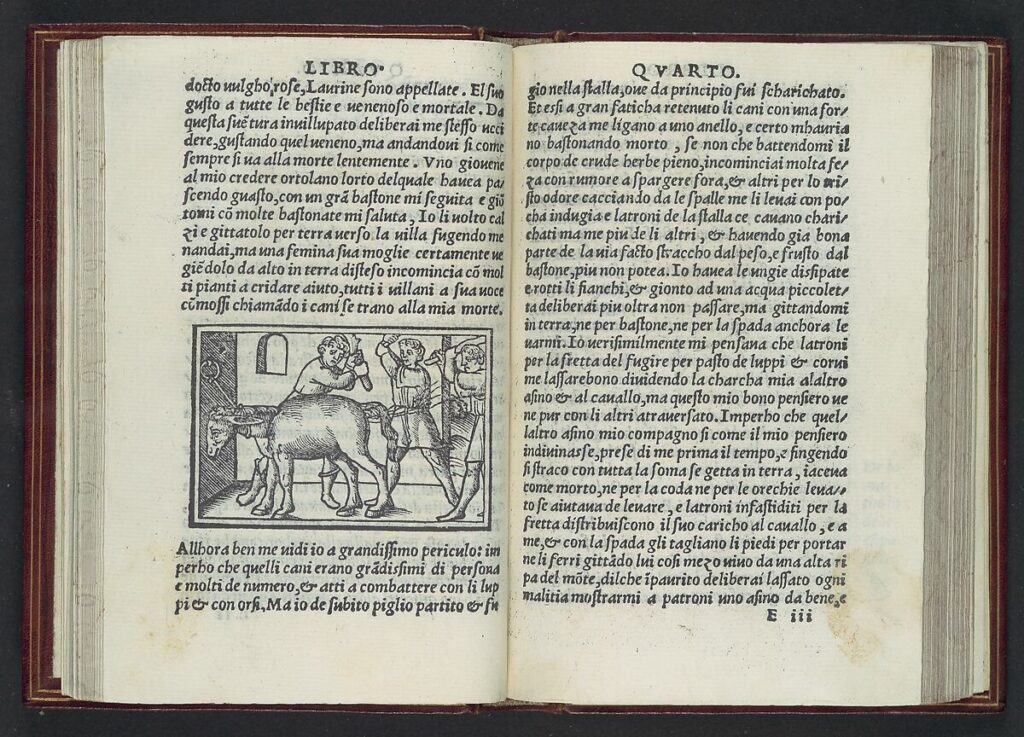
56.608.1(E2v&E3) 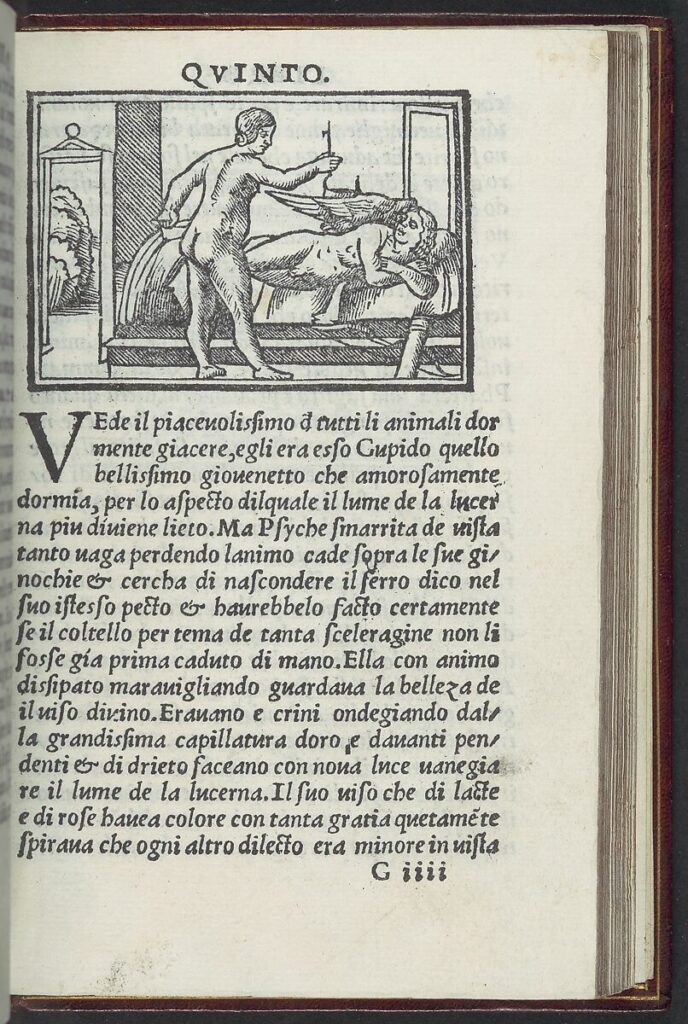
56.608.1(g4) 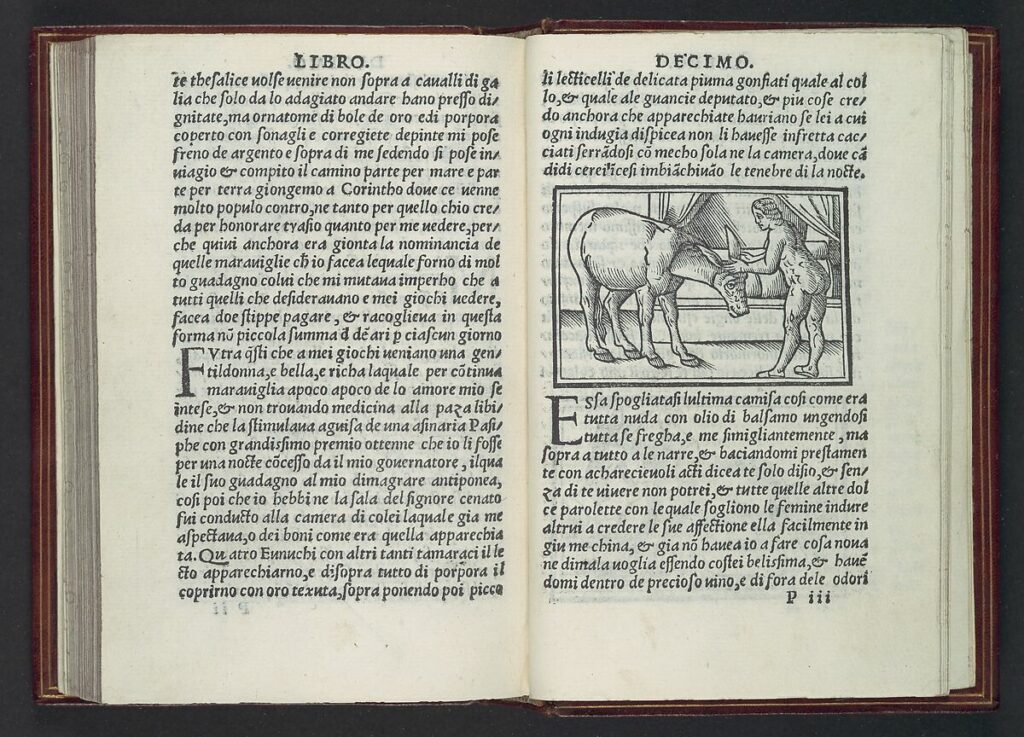
56.608.1(p2v&p3) -

Livius, Historiae Romanae decades, 1493
Livius, Historiae Romanae decades [Italian], Venice, 1493, modern half calf
Description
Titus Livius
Historiae Romanae decades [Italian]. Venice: Johannes Rubeus Vercellensis, for Lucantonio Giunta, 11 February 1493





Median folio (328 x 216mm.), 347 leaves (of 382), [*8 **10] a-o8 p10 aa-oo8 pp10 A-P8, double column, 63 lines plus headline, roman type, woodcut initials, first leaf of each decade with a woodcut illustration within an architectural woodcut border, numerous other woodcut illustrations, modern half leather over speckled paper boards, retaining old lettering-piece on spine, lacking first 18 leaves (the table) and N8-P8 (Bruni’s history of the Punic War), first three leaves repaired with some loss, some occasional staining
This edition contains the first, third and fourth decades of Livy’s history of Rome. While defective, the text of Livy and the illustrations for it are complete. Some of the woodcuts previously appeared in the Malermi bible of 1490, also printed for Lucantonio Giunta, and they subsequently appeared in other Livy editions (Latin and Italian) printed in the 1490s and early sixteenth century, mostly for the Giunta press (see also lot 144 for the 1520 edition).
-

Herodotus. Venice, 1494
HERODOTUS (fl. 5th century BC). Historiae, translated from Greek into Latin by Laurentius Valla, edited by Antonius Mancinellus. Venice: Johannes & Gregorius de Gregoriis, 8 March 1494 [actually not before 30 March 1494].

Median 2o (310 x 217 mm). Collation: A8 (A1r title: Herodoti Halicarnasei libri novem, A1v blank, A2r-8r index, A8v editor’s letter to Nicolaus Rubeus dated 29 March, 1494, three weeks later than the colophon); a-d8 e-x6 (a1r incipit with illustration and border, x6r colophon and sheet register, x6v blank). 142 leaves. Type 26:110R. 45 lines and headline. Woodcut illustration 78 x 113 mm, woodcut border 300 x 197 mm. Initial spaces with guide-letters. (Woodcut border slightly shaved at top, some pale marginal dampstaining at beginning and end, pale stain on several leaves in quires c and d, h2.5 and i3.4 browned.) 18th-century limp vellum, portions of ties preserved (some soiling). Provenance: marginalia throughout in an early hand (some cropped); acquired from Lathrop C. Harper, 1977.
This third edition, preceded by those of 1474 (Venice: Jacobus Rubeus) and 1475 (Rome: Arnoldus Pannartz), is celebrated for having one of the finest woodcut borders of the 15th century. The black-on-white border shows Renaissance ornament and two white-ground insets, the upper of a faun preparing to sacrifice a goat and the lower Hercules at the parting of the ways. It frames a larger cut of the crowning of Herodotus by Apollo and the incipit. Essling saw the hand of the Poliphili Master in these fluid cuts. HC *8472; BMC V, 345 (IB. 21058); Bod.-Inc. H-056; CIBN H-56; IGI 4694; Sander 3376; Essling 735; Hind p. 505; Goff H-90.
-
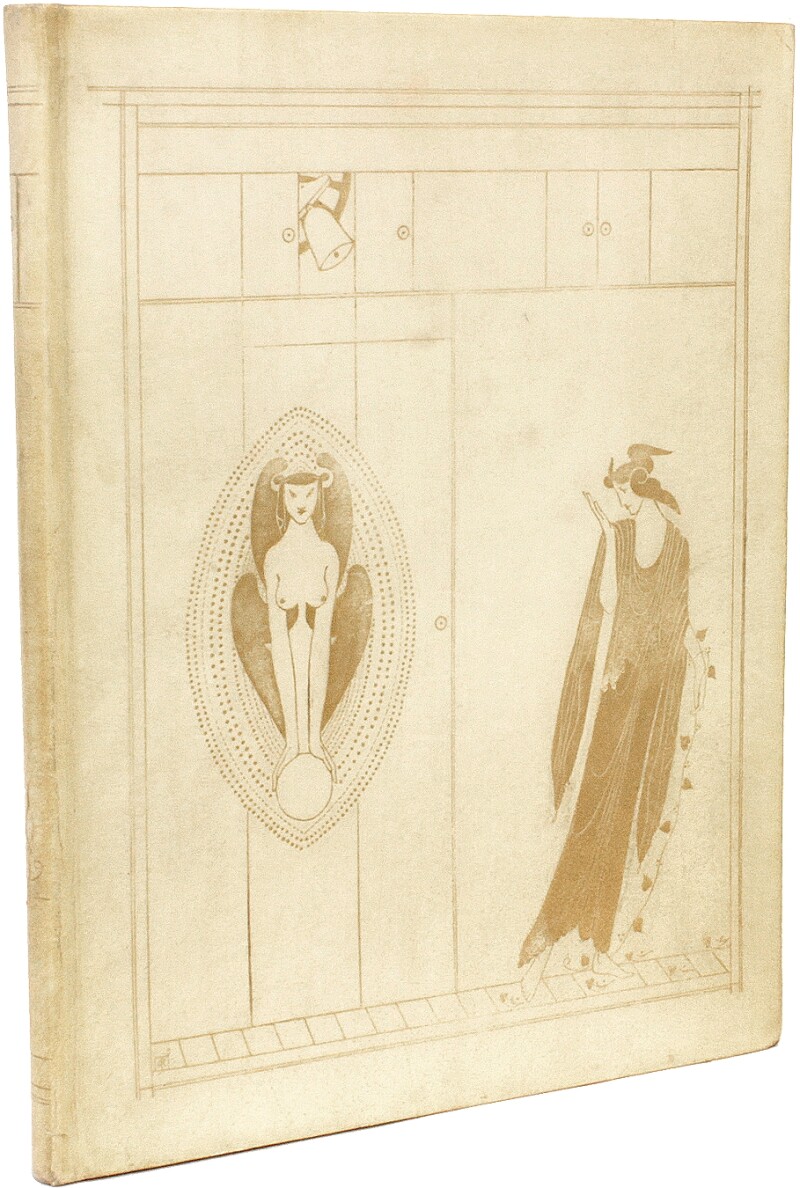
The Sphinx. Wilde.
Description
First-edition illustrated copy of Oscar Wilde’s The Sphinx.
- Oscar Wilde (English).
- Illustrated by Charles Rickets (English).
- London: Elkin Mathews & John Lane at The Sign of The Bodley Head, 1894.
- Limited edition of 200 copies.
- Bound in original art nouveau gilt decorated vellum.
- Housed in a half red morocco clamshell slipcase with raised bands and gilt decorated spine.
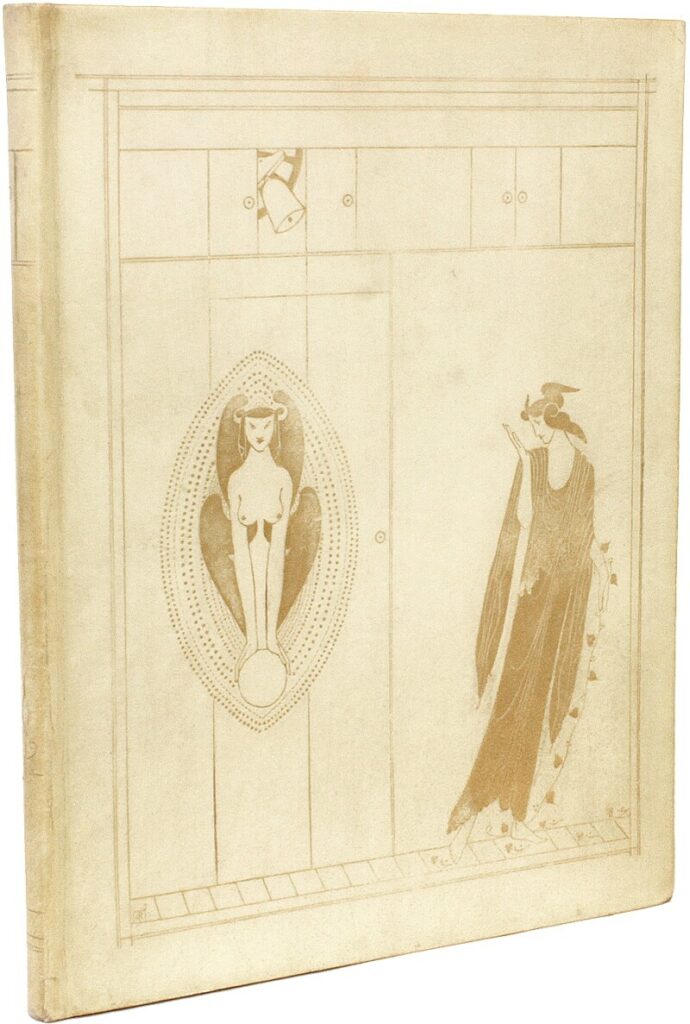
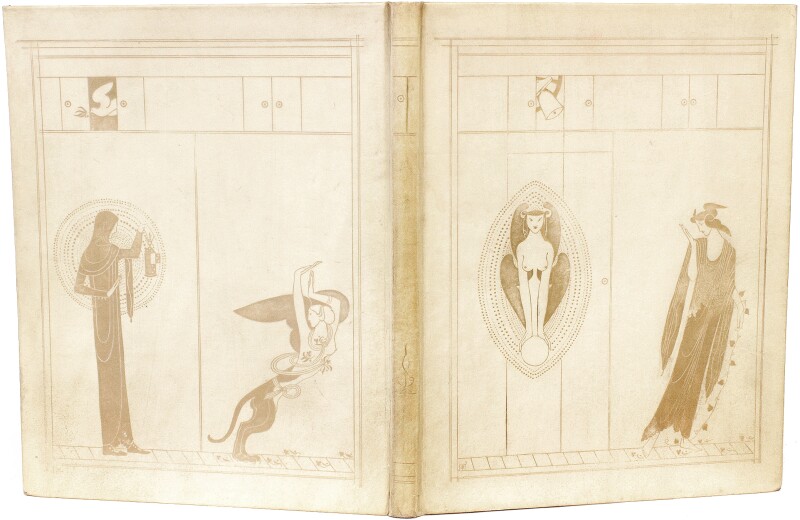
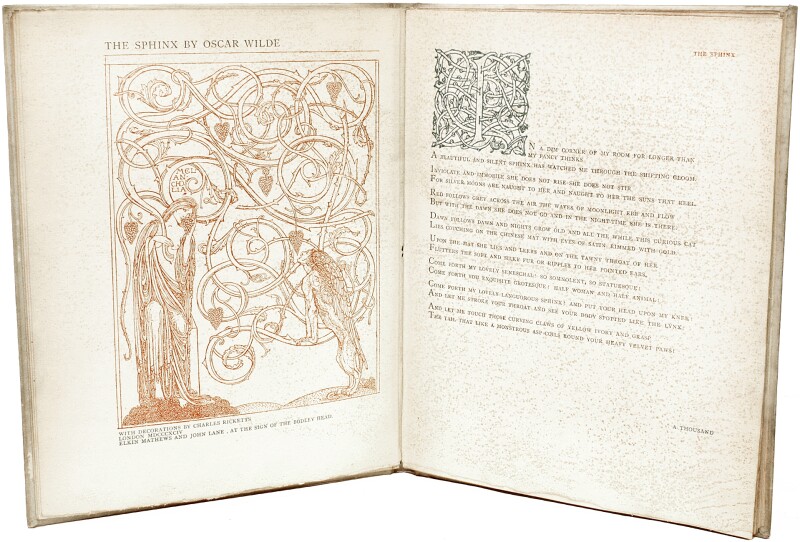
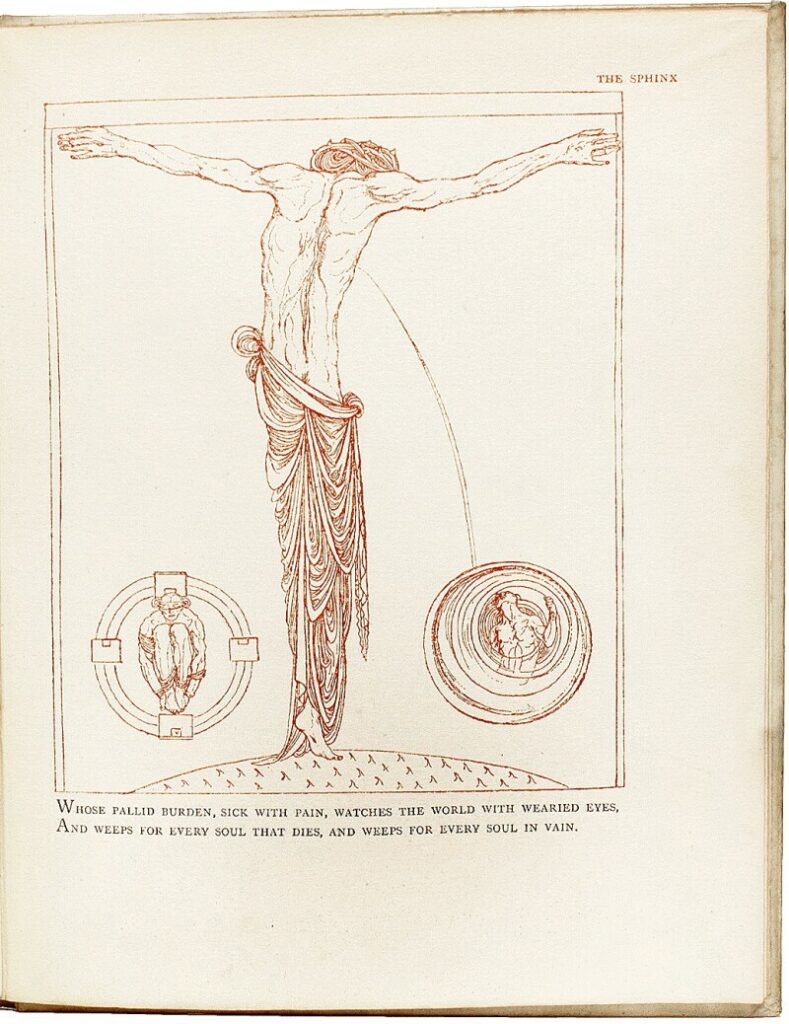
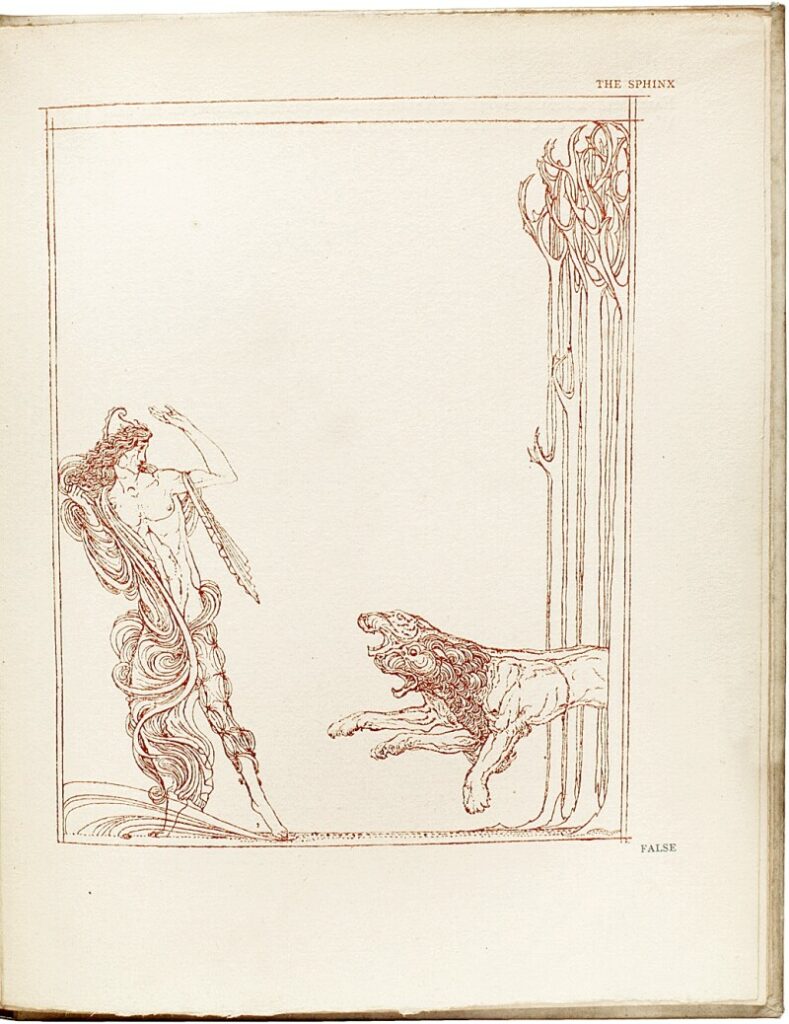
-

Daphnis and Chloe. Vale Press
[Vale Press] Ricketts, Charles and Charles Shannon [Longus, Geo Thornley]
London: Ballantyne Press, Sold by Elkin Mathews, 1893. First edition thus. Large 4to. Original olive green cloth, gilt lettering on spine. One of 210 copies. The first of three pre-Vale Press books, Daphnis and Chloe represents Charles Ricketts and Charles Shannon first and arguably their best book design and illustration. With spacious margins, expressive and symbolist woodcut illustration and dense, Morrisian block text, this book made a huge splash in the Nineties resurgence of excellence in the bookarts. The book took an entire year to put together and stands a a cornerstone of fin-de-siecle book design. Side and bottom edges, untrimmed. A fine copy of an extremely scarce and important early Ricketts’ book. Very few copies have come to market in past decade. Housed in superb maroon cloth backed paper coved boards folding box with paper label on spine.
Longus. Daphnis and Chloe, translated by George Thornley, one of 210 copies, wood-engraved illustrations by Charles Shannon and Charles Ricketts, decorative initials, 4pp. prospectus loosely inserted, light offsetting, browning to endpapers, small red ink ex-libris stamp beneath colophon, original green cloth, uncut, corners very slightly bumped, [Watry A6], 4to, [The Vale for Elkin Mathews and John Lane], 1893.
⁂ Although not strictly a Vale Press item “The Vale” appears at the foot of the spine; the first true Vale Press publication was Milton’s Early Poems issued in 1896.


-
Charles Ricketts and Oscar Wilde’s Woman’s World (addendum)
392. Charles Ricketts and Oscar Wilde’s Woman’s World (addendum)
Ricketts is known to have drawn a honeycomb after an original in the natural history museum, and his early drawings display his knowledge of what was on display at the London museums at the time. His Pompeian woman is surrounded by objects that would have attracted visitors, such as a home altar and a tripod with figures of a sphinx and a goat’s leg. But Ricketts didn’t need to consult a friend at the museum (when young, he probably didn’t have one), or bring a letter of recommendation. He would roam the museum on his own, and look for objects that he could use in his illustrations, where they would not be depicted for their scientific interest, or for the idea of novelty, but to suggest a certain epoche, or cultural phase.
-
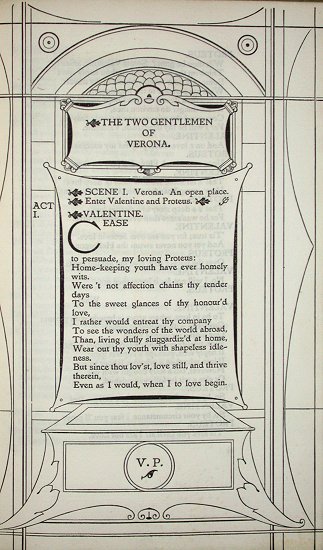
Two Gentlemen of Verona, Vale Press
The Two Gentlemen of Verona by William Shakespeare 1901
one of 310 copies printed on handmade paper
Ransom #44The type used for the Shakespeare volumes was the Avon type which was basically a smaller version of the Vale type.
This page is of interest to bibliophiles and those interested in the printing and construction of books. Note the “c” below the word “day” at the bottom of the image. The “c” means that this is the first page of the third signature in the book. All Vale Press books I have examined are printed in this fashion.The watermark used for the Vale Shakespeare.
From 1900 to 1903 the Vale Press printed the works of Shakespeare in 39 volumes. Ransom has the following to say about the Vale Shakespeare:
310 sets on special H M [hand made paper] with a mermaid watermark; none on vellum. Tragedies, 1-13; Comedies, 14-27; Histories and Poems, 28-39. The first volume was published in April, 1900, followed by the others at monthly intervals. Three different borders were used, one for each group.

